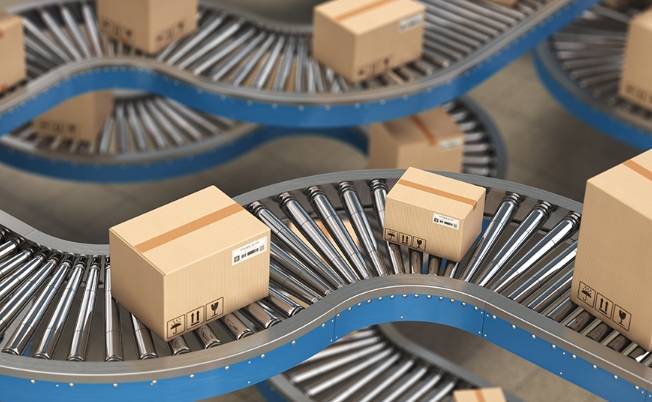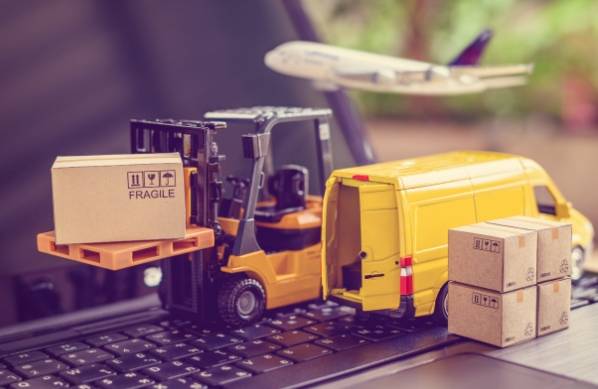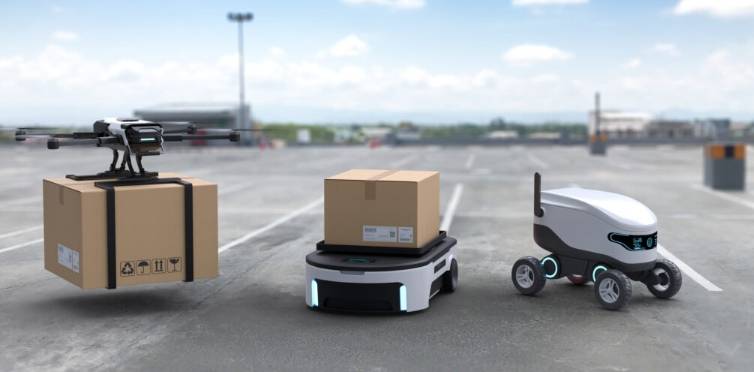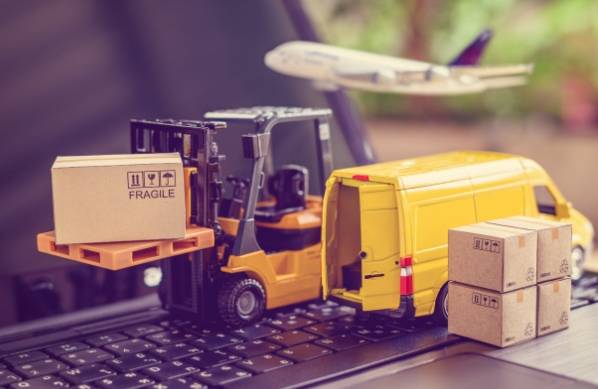With over 15 years of extensive experience in global logistics, Jorge Lopera has held senior positions in customer growth, product management, and strategy. Currently serving as the Vice President of LATAM & Industry at FarEye, Jorge plays a vital role in driving the company’s expansion into the LATAM region.

He oversees various commercial and operational activities, including sales, account management, and partnerships with channels and ecosystem partners. Jorge also serves as an industry expert for FarEye, sharing insights through major publications and supporting analyst relations efforts.
Before joining FarEye, Jorge held the position of VP of Customer Growth at Bringg, where he played a crucial role in driving customer acquisition and expansion. Prior to that, he served as the leader of the e-commerce product development team at DHL, where he spearheaded the implementation of a technology-driven approach to enhance last-mile services in the Americas and Asia-Pacific regions. Jorge’s previous experience also includes working in private equity, where he focused on financial analysis and strategic growth opportunities. He holds a Bachelor of Science degree in Finance and Real Estate from DePaul University.
Technology for All
In today’s retail landscape, characterized by the dominance of e-commerce giants, customers expect instant product delivery without incurring additional costs. To meet these evolving expectations and deliver exceptional customer experiences, retailers and carriers need to harness the power of last-mile delivery technology. In the past, only large corporations like Amazon and FedEx had the resources and infrastructure to offer cost-effective same-day and next-day shipping services.
Nevertheless, with the advancements in technology, any company now has the opportunity to automate and optimize their last-mile delivery operations. However, despite this potential, many businesses still rely on outdated technology and inefficient processes. This not only results in higher costs and supply chain risks but also leads to subpar customer delivery experiences. In today’s highly competitive online retail landscape, where gaining market share is increasingly challenging, these shortcomings can significantly impact a company’s success.
The High Cost of Ignoring Delivery Optimization
Neglecting the use of technology to optimize delivery processes can have dire consequences. Research indicates that 88% of consumers have abandoned online shopping carts due to unsatisfactory delivery terms, and a staggering 85% of customers will not return to a retailer after a negative delivery experience. To stay competitive in the market, retailers and carriers must prioritize the crucial last-mile delivery stage. The good news is that advancements in last-mile delivery technology have made it more accessible and powerful than ever before.
Key Last-mile Delivery Technology Solutions

Here are several key technology-driven solutions that can directly impact last-mile operations and enhance the customer experience. Retailers and logistics providers should consider implementing these solutions:
- Carrier Allocation: Strengthen partnerships with carriers and delivery service providers to optimize costs, minimize risks, and increase capacity and flexibility.
- Visibility & Tracking: Implement end-to-end tracking systems that provide real-time visibility of deliveries to all stakeholders involved, ensuring transparency and accountability.
- Route Optimization: Utilize automation and optimization algorithms to streamline and maximize the efficiency of internal fleet routing, reducing delivery time and costs.
- Omnichannel Fulfillment: Offer customers greater flexibility and speed by implementing various fulfillment options, such as in-store pickup, local delivery, or drop-off locations.
- Customer Experience: Enhance the overall customer experience through features like real-time order tracking, branded delivery experiences, flexible scheduling, and additional services like white-glove delivery and same-day delivery.
- Returns: Address the challenges and costs associated with returned orders by developing seamless and user-friendly returns processes that prioritize customer satisfaction.
- Sustainability: Reduce the environmental impact of last-mile operations by adopting eco-friendly practices, such as using green fleets and implementing emissions reporting and reduction strategies.
By embracing these technology-driven solutions, retailers and logistics providers can significantly improve last-mile operations and meet evolving customer expectations in the competitive e-commerce landscape.
To Build or To Buy
When it comes to implementing or enhancing delivery technology, companies must make a critical decision: should they develop an in-house platform or purchase an existing solution from a vendor? This decision should be guided by several factors that require thorough evaluation. Is there an appropriate platform available in the market that can be swiftly and seamlessly implemented? Do you possess the resources and expertise required to develop and sustain an in-house platform? Additionally, it is important to compare the costs associated with building a platform versus procuring one from a vendor. Carefully considering these factors will help companies make an informed choice that aligns with their specific needs and objectives.
While every company faces unique challenges in last-mile delivery, opting to buy an existing platform instead of building one from the ground up offers several advantages that make it a favorable choice in the long run. Let’s delve into the reasons behind this recommendation.
One of the primary factors to consider is the speed of deployment. Developing an in-house solution can be a time-consuming process, whereas adopting an existing platform allows for rapid implementation. Companies are eager to gain a competitive edge swiftly, and leveraging superior technology solutions can expedite their path to success.
Another critical factor to consider is the pace of innovation. Developing an in-house solution entails the continuous effort of keeping up with evolving technology, industry trends, and company requirements. The ongoing maintenance and updates can become a long-term burden, diverting resources from core operations. On the other hand, by leveraging external software providers, companies can direct their focus towards operational development, configurability, and creative problem-solving, rather than allocating resources to software development and maintenance.

While customization is often mentioned as a benefit of building an in-house platform, it is important to note that an inadequately designed in-house solution may impede an organization’s scalability and adaptability. In contrast, modern last-mile technology vendors provide flexible and customizable solutions that can be tailored to meet the specific needs of a company. These vendors are also capable of adjusting their offerings to accommodate dynamic and evolving consumer preferences, ensuring that the solution remains aligned with changing market demands.
Cost is an essential aspect to consider. Although the upfront purchase cost of an existing platform may seem higher, the long-term benefits, scalability, and efficiencies it offers result in lower overall costs and higher lifetime value. By treating development and maintenance costs as ongoing operating expenses rather than a significant upfront capital investment, companies can have better financial control, minimize risk, and reduce uncertainty in their budgeting. This approach allows for greater flexibility and adaptability to changing market conditions.
Access to carrier networks is a key advantage of opting for an existing solution. Reputable last-mile software providers often provide access to extensive carrier networks, eliminating the need for companies to individually engage with multiple carriers and integrate with each of them. This streamlined approach simplifies and accelerates the expansion of a global delivery footprint, allowing companies to extend their reach and efficiently serve new customers in different locations. By leveraging existing carrier networks, businesses can save time, effort, and resources while rapidly scaling their delivery capabilities.
Companies that opt to purchase last-mile delivery solutions typically meet the following criteria:
• Software development is not a core focus of their business operations.
• Market-ready solutions that address their specific business challenges are readily available.
• Internal resources are limited, and the company prioritizes focusing on its core competencies rather than investing in software development.
• The need for quick deployment outweighs the requirement for a fully customized product.
Navigating the process of purchasing technology from a vendor can be challenging, particularly when it comes to estimating costs. Several factors, such as industry, region, transaction volume, delivery model, level of customization, support, and the specific modules required, all play a role in determining the cost to your business. This article delves into different pricing models and the integration process, shedding light on important considerations and potential challenges to be aware of.
Evaluating Pricing Models

When it comes to pricing models, businesses should carefully consider their budgeting needs, cost analysis requirements, customization preferences, and alignment with long-term goals. Here are three common pricing models to consider:
- Flat Rate: This model offers simplicity in budgeting and internal communication. However, it may not provide proportional cost benefits based on service consumption and might not incentivize increased usage.
- Price per Transaction: With this model, the cost is directly tied to the volume of transactions. It is beneficial for cost analysis and determining the bill of materials. However, budgeting for this model can be challenging due to fluctuations in transaction volume.
- Price per Module with Transaction Volumes: This model allows for customization and provides financial incentives through module bundling. It offers transparency in module-wise pricing and aligns costs with evolving business goals.
When negotiating pricing with vendors, businesses can employ the following strategies:
- Commitments: Start with a lower commitment in the initial year and increase it in subsequent years to secure more favorable pricing terms.
- Price Bands: Look for tier-based pricing structures that reward higher consumption, providing financial incentives for increased usage.
- Contract Durations: Long-term contracts often come with financial benefits, providing stability and cost advantages.
- Billing: Explore options for advance billing that offer additional incentives and potential freebies.
By carefully considering these pricing models and negotiation strategies, businesses can make informed decisions that align with their financial goals and requirements.
Ensuring Smooth Implementation

Seamless integration of purchased technology with existing processes and systems is essential for efficient operations. This entails establishing connections or APIs between your business and the vendor’s platform. However, integration can be a time-consuming endeavor, especially for smaller companies with limited resources. Fast integration is crucial for achieving a quick time-to-market and gaining a competitive advantage. Integration timelines can range from a few days to several months, depending on the complexity of the systems involved.
When selecting a vendor, it is essential to have a clear understanding of the integration process and the associated timelines. Consider the following factors to ensure a smooth integration:
- Data Integrity: Poor data quality and inconsistencies, as well as incorrect data mapping, can cause integration delays. It is crucial to choose a vendor with robust data management practices to maintain data integrity throughout the integration process.
- Internal Resources: Assess your organization’s internal tools, capabilities, and resource availability. Insufficient tools or limited bandwidth can hinder the integration process. Engage in discussions with potential vendors to address any potential resource constraints and ensure a successful integration.
- Compatibility with Existing Technologies: Evaluate whether the new technology can seamlessly integrate with your existing systems, such as warehouse management systems (WMS) or transportation management systems (TMS). It is important to ensure that the new technology not only integrates well with your company’s data but also with the technology already in place.
By considering these factors and engaging in thorough discussions with vendors, you can make an informed decision and facilitate a smooth integration process.
Looking Ahead
The future of last-mile delivery holds the promise of customers being able to order anything from anywhere and receive instant deliveries with minimal environmental impact. While the exact timeline for achieving this remains uncertain, the world is progressing rapidly toward this objective. Companies that can outpace their competitors in reaching this goal are likely to thrive in the long term. Technology plays a crucial role in making this vision a reality.

